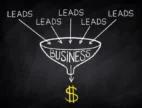6 Tips For Taking Your Business From In-Store To Online
by Sumona Business 22 June 2022

If you are thinking of making the leap from in-store to online business, you’ll want to stick around for the rest of this article.
With the trend of online shopping and e-commerce soaring meteorically and with no end in sight, more and more retailers are now choosing to operate their businesses in the online sector.
For merchants who are new to the world of online shopping, this can be both an exciting and incredibly overwhelming time; with so much to do and so many new things to learn. Thankfully, we’re here to help.
Here are our top 6 tips for seamlessly transitioning your business from brick-and-mortar to e-commerce.
Overview:
- Invest In A Quality ROTA System
- Build Your Online Presence
- Set Up Online Payment Systems
- Secure Against Cyber Threats
- Figure Out Your Fulfilment Strategies
- Track And Assess Your Progress
1. Invest In A Quality ROTA System
As you transition to an online business, there is a very high chance that you may end up with significantly less face-to-face contact with employees such as packers, delivery drivers, and marketing and customer service staff. As such, it is vital to utilize top rated ROTA software in order to stay on top of managing your weekly shifts.

ROTA software will also free up a significant amount of management time that you can instead spend on various other facets of building up your online presence (marketing, social media, etc).
Finally, utilizing a ROTA system will also empower employees by allowing them to easily swap shifts independently and giving them the autonomy and trust to manage their schedules independently.
Getting this sorted before moving on to the other aspects of transitioning your business from in-store to online will help you easily manage your employees from the get-go.
2. Build Your Online Presence
To succeed at e-commerce, you are going to need to put some work into building your online presence. Chances are you already have a business website, and if you do, it’s time to start optimizing it for better SEO and searchability. In order to do this, we recommend:

- Use best practices for SEO so that people are able to find your online store via Google or other search engines;
- Ensure that your website search function and navigation are user-friendly to help shoppers find the products they need; and
- General optimization of your e-commerce store to maximize online sales.
If you don’t have a website, don’t stress. Now is the perfect time to start one and you can find out more about how to do that by heading over to this article. Once you’ve done that, be sure to optimize your website according to the same suggestions above!
But wait – it doesn’t end there. Social media is by far the most powerful tool for online businesses, so be sure to create accounts to make your mark on the cyber world. Some buzzing social media platforms you may choose to focus on include (but are not limited to):
- Tik Tok
- Tumblr
Learn The Ins and Outs of Online Marketing
Now that you’ve got a killer e-commerce website and an inventory of amazing items to sell, it’s time to learn the ins and outs of online marketing. Online marketing differs greatly from traditional marketing, and here are some options that will help you make the most out of your marketing endeavors:
I. Pay-Per-Click Ads
II. Influencer Marketing
III. Email Marketing
IV. Social Media Marketing
I. Pay-Per-Click Ads:
PPC ads are a model of internet marketing in which advertisers (you) pay a fee each time someone clicks on your ads. To find out more about how you can set up a PPC ad account for your online business, check out this helpful guide.
II. Influencer Marketing:
Love them or hate them, influencers are here to stay. With their specific niches and die-hard fans/followers, influencers have high-quality engagement that more than often lead to sales.
We recommend finding and partnering up with influencers who align with your values and target audience. To find out more about where you can find the perfect social media influencer for your brand, check out this page.
III. Email Marketing:
Email marketing is a tried and tested method of online marketing which can help you reach and connect with your target audience in an affordable and personalized way.
A killer email marketing strategy has the potential to increase your conversions by up to 150%, so don’t make the mistake of missing out on this one. Some popular email marketing platforms include Mailchimp, Active Campaigns, and Hubspot.
IV. Social Media Marketing:
Last but not least, the easiest and possibly most affordable way of getting your brand out there is to utilize your social media platforms. With the majority of platforms offering hyper-targeted demographics, spending as little as $5 on a sponsored ad can have a monumental impact on the number of followers and sales you make.
3. Set Up Online Payment Systems
And now, it’s time to talk business. If you’re transitioning to an online business, one of the most important things is getting your online payments set up.

Essentially, the more payment options you offer, the better. Most e-commerce platforms in 2022 will allow you to utilize a variety of different payment formats, with the home of the most common being:
- Paypal
- Apple Pay
- Amazon Pay
- Credit and Debit Cards, and
- Digital Wallets
- Buy Now, Pay Later services such as ZipPay, AfterPay or Klarna
Be sure to get started on your payment options sooner rather than later to avoid losing out on potential revenue.
4. Secure Against Cyber Threats
Because you’ll be dealing with sensitive information such as customer addresses, credit card numbers, and more, it is vital that you secure your eCommerce website against cyber threats.

There are many ways to do this, and at baseline, you should secure your website with SSL certificates, and utilize payment gateway security and firewalls. For a more in-depth look at cyber security than we could ever provide, we recommend heading over to this helpful piece.
5. Figure Out Your Fulfilment Strategies
Getting your products to customers in-store is a piece of cake – a customer chooses an item, pays for it, and then simply walks out the door.

However, getting your product to customers who shop on your e-commerce website is a whole different ball game. This is why figuring out your fulfillment strategies sooner rather than later is key. Important things to focus on include:
- Product storage and inventory;
- Order processing;
- Picking;
- Product packaging;
- Product shipping and delivery options; and
- Returns processing.
Of course, it’s a lot more complicated than that, so your best bet is to check out this in-depth guide on everything you need to know about creating a fulfillment strategy.
6. Track And Assess Your Progress
Last but not least, Rome wasn’t built in a day, and nor will it be the case for your online success. This is why taking it to step by step, tracking, and assessing your progress is vital. We suggest selecting key performance indicators to keep track of such as cost per conversion, revenue, gross profit, and overhead expenses.

Monitor these digits as the weeks and months go by and you’ll slowly get the hang of what is working for your e-commerce business and what is working against it. Don’t get disheartened if it’s not all sunshine and rainbows in the beginning – keep at it with hard work and dedication and results are sure to follow.
Taking your business from in-store to online doesn’t have to be an arduous task. With some hard work, dedication, and a little expert know-how, you’ll quickly start to reap the numerous benefits of operating your business online.
We hope that today’s article has given you some valuable insight into transitioning your business from a brick-and-mortar setup to e-commerce don’t hesitate to share your thoughts or ask a question in the comment section below! We cannot wait to hear from you!
Additionals:







































































































